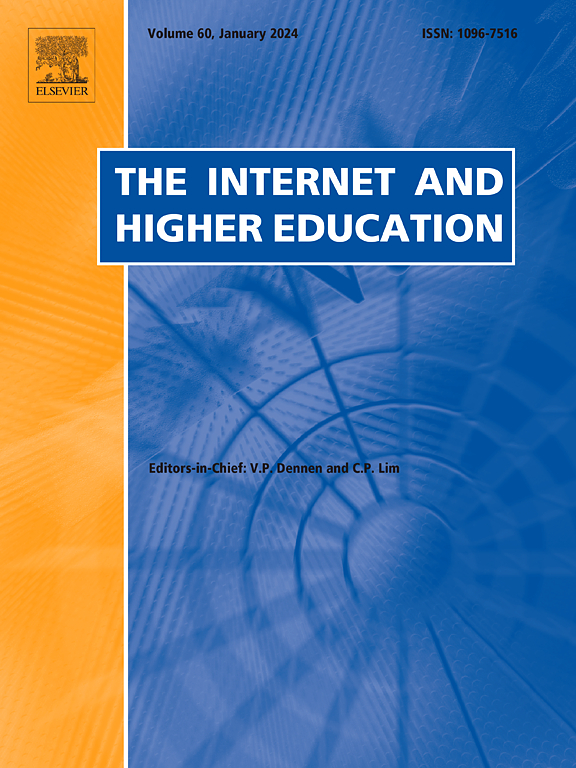异步讨论中的时间结构:网络大学课程协同学习的设计
IF 6.8
1区 教育学
Q1 EDUCATION & EDUCATIONAL RESEARCH
引用次数: 0
摘要
异步在线讨论(AOD)作为一种社会学习工具提供了教学优势,但其成功在很大程度上取决于学生的积极参与和持续参与。最近的研究强调了利用时间数据来理解讨论动态和告知教学策略的潜力。然而,上下文因素在时间数据分析中的作用尚未得到系统的研究。为了解决这一差距,本研究考察了时间模式和上下文因素之间的相互作用,包括讨论形式、小组配置和课程。我们分析了一门大学课程中22个在线讨论的时间戳记录数据,以研究不同背景下参与的时间模式。数据可视化和线性混合效果建模显示,以截止日期为导向的发帖行为占主导地位。聚类分析结果进一步表明,及时的参与、一致的响应和持续的参与是学业成功的关键。我们的研究结果表明,讨论设计往往忽略了时间方面,这可能会导致次优参与度。为了解决这个问题,我们提出了一种时间结构方法,将明确的教师强加的时间表与内隐的社会构建的时间结构相结合,辅以软推动来促进自主性和维持讨论参与。研究结果对优化在线讨论设计具有理论和实践意义。本文章由计算机程序翻译,如有差异,请以英文原文为准。
Temporal structuring in asynchronous discussions: Designing for collaborative learning in online university courses
Asynchronous online discussions (AOD) offer pedagogical advantages as a social learning tool, but their success largely depends on students' motivated participation and sustained engagement. Recent research highlights the potential of leveraging temporal data to understand discussion dynamics and inform instructional strategies. However, the role of contextual factors in analyzing temporal data has not been systematically investigated. To address this gap, this study examines the interplay between temporal patterns and contextual factors including discussion format, group configuration, and course sessions. We analyzed logged timestamp data from 22 online discussions in a university course offered across two semesters to examine temporal patterns of participation in various contexts. Data visualization and linear mixed-effects modeling revealed a dominant trend of deadline-oriented posting behaviors. Cluster analysis results further indicated timely engagement, consistent responsiveness, and ongoing participation are key to academic success. Our findings suggest that discussion design often overlooks temporal aspects, which may contribute to suboptimal engagement. To address this, we propose a temporal structuring approach that combines explicit instructor-imposed schedules with implicit socially constructed temporal structure, supplemented by soft nudges to promote autonomy and sustain discussion engagement. The study concludes with theoretical and practical implications for optimizing online discussion design.
求助全文
通过发布文献求助,成功后即可免费获取论文全文。
去求助
来源期刊

Internet and Higher Education
EDUCATION & EDUCATIONAL RESEARCH-
CiteScore
19.30
自引率
4.70%
发文量
30
审稿时长
40 days
期刊介绍:
The Internet and Higher Education is a quarterly peer-reviewed journal focused on contemporary issues and future trends in online learning, teaching, and administration within post-secondary education. It welcomes contributions from diverse academic disciplines worldwide and provides a platform for theory papers, research studies, critical essays, editorials, reviews, case studies, and social commentary.
 求助内容:
求助内容: 应助结果提醒方式:
应助结果提醒方式:


